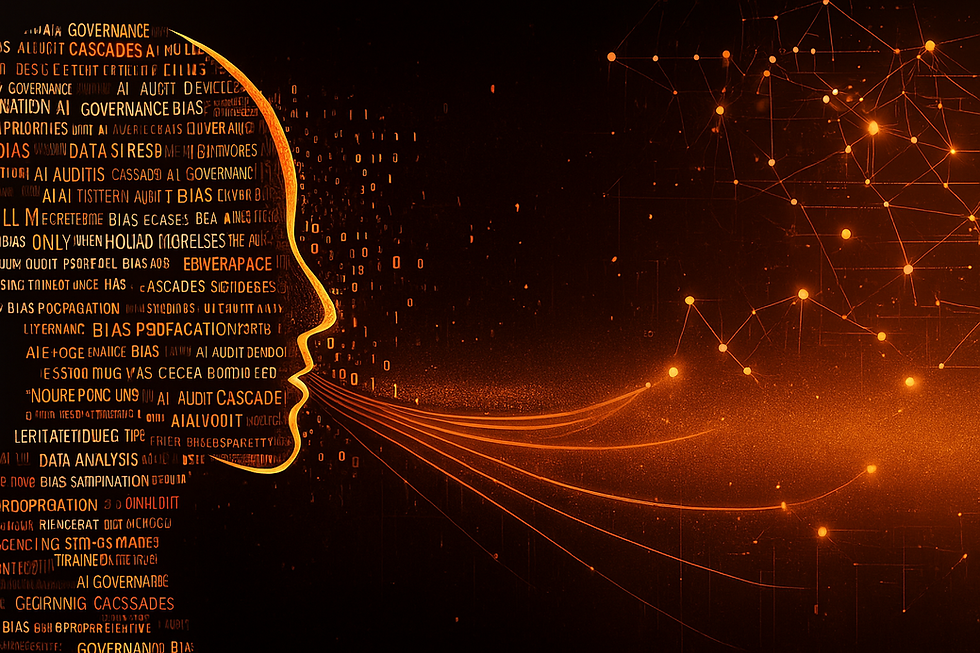The Corrupted Foundation: How Shadow Data Infects the Training Pipeline
- Dale Rutherford

- Oct 15
- 3 min read
By: Dale Rutherford
October 15, 2025

Every LLM begins as a mirror of its corpus. The model doesn’t “know” anything beyond what it’s shown. When Shadow Data slips in, the mirror warps.
1. Structural chaos.
Without proper metadata (no timestamps, source labels, or quality indicators), data preprocessing falters. Chunking, filtering, and semantic mapping become guesswork, producing incoherent training examples that weaken the model’s contextual grounding.
2. Redundancy and overfitting.
Duplicated text fragments flood the internet. When an LLM trains on this redundancy, it memorizes rather than learns. The result: parroting instead of reasoning, and the risk of regurgitating copyrighted or confidential material.
3. Biases in the bloodstream.
Unmoderated digital spaces teem with biases (social, political, racial, and cultural). These biases enter models like micro toxins, subtle but cumulative, shaping linguistic behavior in ways developers can’t easily trace or control.
4. Privacy leaks waiting to happen.
Perhaps most alarming: uncurated data often includes personally identifiable information (PII). Once absorbed, it can resurface through model outputs (emails, phone numbers, even fragments of private conversations), creating unprecedented ethical and legal liabilities.
The Flawed Reflection: How Shadow Data Shapes AI Output
The consequences are visible to anyone who’s used generative AI. Hallucinations, biases, and unpredictable tone shifts aren’t random, they’re echoes of contaminated training data.
Hallucinations: When the input world is contradictory, the model invents coherence. That’s why an LLM can sound confident while being catastrophically wrong.
Embedded Bias: Data is the DNA of language. Train on bias, and bias becomes truth. The model starts to “believe” what it was exposed to, whether it’s gender stereotypes, misinformation, or ideological slants.
Data Leakage: The model’s memory isn’t a vault, it’s a sieve. And what leaks out could expose real people and organizations.
The Path Forward: From Shadows to Stewardship
Solving the Shadow Data problem requires not more data, but better data. Quality, not quantity, must become the new mantra of AI development.
1. Radical data curation.
Every dataset should be treated as a living organism; documented, cleaned, and continuously audited. The “more is better” era of indiscriminate scraping must end.
2. Governance as architecture.
Organizations fine-tuning or deploying LLMs must implement auditable data governance: provenance tracking, transparency logs, and policy-based access control. Governance isn’t bureaucracy, it’s scaffolding for trust.
3. Human education and cultural change.
Shadow AI begins with human behavior. Training employees to understand the risks of sharing data with unvetted tools is a practical step toward containing the problem.
The Ethical Imperative
AI doesn’t just reflect humanity, it refracts it. When our shadows become its teachers, we inherit their distortions. The question, then, is not merely technical but moral: Can we build machines that reason ethically if their foundations are corrupted by what we ignore?
The future of trustworthy AI depends on bringing these hidden architectures into the light. The integrity of our systems, and the societies they serve, rests on it.
References:
Bender, E. M., Gebru, T., McMillan-Major, A., & Shmitchell, S. (2021). On the dangers of stochastic parrots: Can language models be too big? Proceedings of the ACM Conference on Fairness, Accountability, and Transparency (FAccT).
Carlini, N., et al. (2021). Extracting training data from large language models. USENIX Security Symposium.Gartner. (2024). Manage the Risks of ‘Shadow AI’. Strategic Technology Trends Report.Inan, H., et al. (2021). The Secret Sharer: Evaluating and Testing Unintended Memorization in Neural Networks. arXiv:2111.07605.
Ji, Z., et al. (2023). A Survey of Hallucination in Natural Language Generation. ACM Computing Surveys.Raffel, C., et al. (2021). Documenting Large Webtext Corpora: A Case Study on the Colossal Clean Crawled Corpus (C4). arXiv:2104.08758.
EleutherAI. (2021). The Pile: An 800GB Dataset of Diverse Text for Language Modeling. arXiv:2101.00027.ZDNet. (2024). What is Shadow AI? And why is it a risk for your business?





Comments